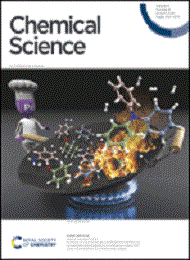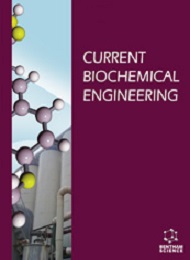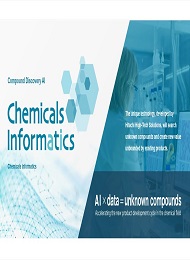Theme: “Petrochemical sciences in an Era of Transformation: A New Landscapeâ€.
Petrochemical Sciences 2022
We are delighted and honored to extend an invitation to all prominent visitors, delegates, researchers, professionals, and students to participate in the "4th International Conference on Oil, Gas, and Petrochemical Sciences" via Webinar on November 23-24, 2022. We are hosting a conference that will bring together business, academia, government agencies, and R&D specialists who are working to master topic knowledge and accelerate transformation in the field of Petro Chemical Sciences.
The main theme of the conference is “Petrochemical sciences in an Era of Transformation: A New Landscape”.
Conferences are the only places where we can learn and share information. Its goal is to bring together academic leaders, business leaders, students, and research scholars from the petrochemical industry to exchange their experiences. You will have more opportunities to advance your career by attending this conference, and your attendance is greatly welcomed. This worldwide conference provides a venue for new scholars to share their expertise and experiences.Petrochemicals are extremely important in our daily lives. They became a vital part of our lifestyle for all of our necessities, such as gasoline, clothing, plastic products, pharmaceuticals, cosmetics, paints, and other petrochemical-based products.
The "4th International Conference on Oil, Gas, and Petrochemical Sciences" will be held on November 23-24, 2022, and is open to all attendees from across the world.
Why to attend: With people from all over the world interested in learning more about Petrochemical Sciences, this is your best chance to attend the world's largest gathering of professionals at this 2-days conference.
Traget Market: Students of chemical and petrochemical engineering, researchers of chemical and petrochemical engineering, and professors of chemical and petrochemical engineering
There will be world-renowned speakers, as well as the most recent trends, techniques, and updates, as well as developments in the domains of Petrochemical Sciences.
Come & become Part of it..
Track 1: Petro chemistry and petrochemical processes
Petroleum (crude oil) is an essential mineral that transforms into useful products and raw materials for people' daily needs, and it plays an important role in chemistry. These are obtained by refining petroleum through a series of procedures that yield a variety of products.
Chemical engineering procedures for transforming petroleum (crude oil) into various by products such as petrol, diesel, aviation fuel, kerosene, lubricants, engine oils, liquefied petroleum gas (LPG), compressed natural gas (CNG), and liquefied natural gas (LNG) are used in the technology of processing petroleum to various fossil fuels (LNG).
- Process of making engine lubricant and grease
- Catalytic reforming and hydro treatment
- Process of refining and treating petroleum
- Petrochemicals distillation process
- Process of separation and unit operations.
- Related Associations: International Association of Drilling Contractors | International Association of Geophysical Contractors | Interstate Oil & Gas Compact Commission | Marcellus Shale Coalition | National Oil Shale Association | National Stripper Well Association | Natural Gas Supply Association | Ocean Drilling Program and Petroleum Equipment Suppliers Association.
- RelatedCompanies: Sinopec | SaudiAramco | CNPC | Shell | ExxonMobil | Total | Valero | Gazprom | Phillips 66 | Saipem.
Track 2: Chemical processing and biochemical engineering
Biochemical engineering is the development of biological processes linked with the extraction of raw materials from chemicals to manufacture goods for industrial domains as diverse as the medical, health care, and biotechnology industries, among others...
As part of producing Bio process engineering, the topic of research has origins in both chemical and biochemical engineering.
- Engineering of petroleum reservoirs
- Pharmaceutical development
- Techniques for industrial processing
- Technology for food processing
- Related Associations: I.M.Sechenov Institute of Evolutionary Physiology and Biochemistry | Institute of Biochemistry, Molecular Biology and Biotechnology | Institute of Chemistry | Slovak Academy of Sciences | Institute of Molecular Biotechnology | Institute of Soil Science and Agrochemistry | Institute of Biochemistry & Biophysics | International Society for Computational Biology Student Council.
Track 3: Support for both offshore and onshore fields
The offshore drilling procedure entails drilling a wellbore into the earth's deeper layers in order to extract petroleum from the reservoir. It's usually done to look for petroleum in rock formations beneath the seafloor. Offshore drilling present’s obstacles, both from the hydrocarbons placed in the field and the materials employed during the drilling operation to recover them, according to the term.
- Floating offshore vessels
- Project management from afar
- Using the rig fleet
- Optimization of offshore operations
- Development of offshore fields
- Related Associations:American Association of Drilling Engineers | American Exploration & Production Council | American Gas Association | American Petroleum Institute | Association of Energy Service Companies | Domestic Energy Producers Alliance | Gas Compressor Association | Independent Petroleum Association of America | International Association of Drilling Contractors | International Association of Geophysical Contractors | Interstate Oil & Gas Compact Commission.
- Related Companies: Schlumberger | Halliburton | Fluor Corp | Baker Hughes | Transocean | Ensco Plc | Seadrill | Noble Corporation | Diamond Offshore | Rowan Companies | Saipem | Weatherford | Stena Drilling | COSL | Nabors Industries | KCA Deutag | Parker Drilling.
Track 4: Upstream, midstream, and downstream integration
The petroleum industry is organized into three streams, as follows:
Hydrocarbons are discovered, wells are drilled, and raw materials are extracted in upstream oil and gas activities. Offshore rig operations, a feasibility study of the field, equipment rental, and resources for the activities are all part of this process.
Midstream operations, which include pipelines, tankers, and storage facilities, serve as a link between the upstream and downstream industries, handling logistics and storage of crude oil and gas.
The process of obtaining petroleum products from raw materials, which includes refining and marketing from energy firms to merchants or end consumers, is known as downstream operations.
EPC for upstream/midstream Crude Oil Refining Process Optimization capability and capacity
- Challenges in logistics and marketing
- Target refining and petrochemical products Integration.
- Natural gas processing
- Hydrocarbon exploration
- Related Associations: International Association of Geophysical Contractors | Marcellus Shale Coalition | National Oil Shale Association | Interstate Oil & Gas Compact Commission | Natural Gas Supply Association | Ocean Drilling Program | Society of Petroleum Engineers | Society of Petrophysicsts.
- Related Companies: Abu Dhabi National Energy Co | PJSC | Antero Resources Corp | Apache Corp | Baker Hughes Co | BP Plc | Eni SpA | Halliburton Co | Hellenic Petroleum SA | EOG Resources Inc | EQT Corp | Equinor ASA | Esso Thailand Public Co. Ltd | Exxon Mobil Corp | Formosa Petro chemical Corp | Rosneft Oil Co | Royal Dutch Shell Plc | Saipem.
Track 5:Technology for pipeline transportation
Pipeline transportation is a logistical procedure that transports raw materials collected from oil and gas sources to a petrochemical refinery, acting as a link between upstream and downstream operations.
Oil transport pipelines are typically made of steel pipes or plastic tubes buried beneath the surface, with pump stations delivering the oil from the production field to the refinery.
Natural gas pipes are built of carbon steel and are used to transfer raw gases from oil and gas fields to hydrocarbon processing plants.
- Pipeline design, installation, and maintenance
- Pipelining pigging
- Assurance of pipeline flow and efficiency
- Blending liquid streams
- Hazards must be identified.
- Related Associations: Australian Pipelines & Gas Association | Distribution Contractors Association | International Marine Contractors Association | Pipeline Industries Guild | International Pipeline & Offshore Contractors Association | Pipeline Contractors Association of Canada.
- Related Companies: Energy Transfer LP | Enterprise Products Partners L.P | Etp Legacy LP | Kinder Morgan Inc | CLP Holdings Ltd | Devon Oei Operating, Inc | TC Energy Corporation | Oneok Partners | L.P.Targa Resources Partners LLC | Enlink Midstream LLC | TransCanada PipeLines Limited | Entergy Louisiana LLC | The Williams Companies Inc.
Track 6: Drilling and operation of wells
The petrochemical industry's development of offshore production fields adds to the cost of energy resources. These are pieces of boring equipment that are used to complete project tasks. The dipole sharing investigation tool determines the mechanical process of drilling (DSI).
- Drilling offshore
- logging of wells
- Drilling by rotary
- Drilling on land
- Fracking with hydraulics
- Flaring well
- Oil spill prevention and hazard reduction.
- Related Associations: International Association of Geophysical Contractors | Marcellus Shale Coalition | National Oil Shale Association | Interstate Oil & Gas Compact Commission | Natural Gas Supply Association | Ocean Drilling Program | Society of Petroleum Engineers | Society of Petrophysicsts.
- Related Companies: Apache Corp | Baker Hughes Co | BP Plc | Halliburton Co | Hellenic Petroleum SA | Eni SpA | EOG Resources Inc | EQT Corp | Equinor ASA | Esso Thailand Public Co. Ltd | Exxon Mobil Corp | Formosa Petrochemical Corp | Rosneft Oil Co | Royal Dutch Shell Plc.
Track 7: Petroleum exploration and oil field management
Petroleum exploration is the process of discovering oil and gas beneath the earth's surface. This procedure combines the use of technology and geological data to drill wells in the fields while taking into account various parameters.
Oil and gas exploration refers to the collecting of field data, identification of probable oil reservoirs, field evaluation, and project development based on an understanding of the oil/gas field's underlying resources.
- Plans for Exploration
- Geophysical techniques
- Gathering and interpreting seismic data
- The formation and evolution of basins
- Petroleum field geochemistry
- Systems of petroleum geology.
- Related Associations: National Stripper Well Association | Natural Gas Supply Association | Ocean Drilling Program | American Association of Drilling Engineers | American Gas Association | American Petroleum Association | Marcellus Shale Coalition | Association of Energy Service Companies.
- Related Companies: Apache Corp | Baker Hughes Co | BP Plc | Halliburton Co | Hellenic Petroleum SA | Eni SpA | EOG Resources Inc | EQT Corp | Equinor ASA | Esso Thailand Public Co. Ltd | Exxon Mobil Corp | Formosa Petrochemical Corp | Rosneft Oil Co | Royal Dutch Shell Plc.
Track 8: Green Chemistry & Sustainable Energy
Sustainable energy is energy that meets our requirements without harming the environment. Sustainable chemistry is another term for green chemistry. The major goal is to limit the amount of hazardous emissions released into the atmosphere, making the planet more environmentally friendly.
The terms "sustainable energy" and "renewable energy" relate to the use of renewable natural energy that does not harm the environment. Renewable energy projects pose questions about their long-term viability. It aids in the reduction of carbon emissions released into the atmosphere by man-made items in industries and factories. Renewable energy technologies are critical in reducing reliance on fossil fuels and, as a result, lowering greenhouse gas emissions into the atmosphere.
- Green chemistry in the pharmaceutical industry
- Improving geothermal technologies
- Intelligent grid technologies
- Developing next-generation green catalysis
- Green chemistry for pollution control
- Related Associations: International Geothermal Association (IGA) | International Hydropower Association (IHA) | International Solar Energy Society (ISES) | World Bioenergy Association (WBA) | World Wind Energy Association (WWEA).
- Related Companies: Siemens | Vestas | GE Energy | NextEra Energy Inc | FKA Dong Energy | Suzlon | Berkshire Hathaway Energy | Avangrid Renewables | Inv Energy LLC | EcoPlexus Inc | Xcel Energy | Geronimo Energy | Georgia Power | Duke Energy.
Track 9: Catalysis and pyrolysis are two different processes.
It is a chemistry procedure that entails putting a catalyst into the chemical reaction environment, which accelerates the pace of reaction and hence maximizes production. These chemical reactions only require a minimal amount of catalyst, which speeds up the reaction rate and hence increases product production. In general, the chemical reaction occurs quickly due to the catalyst, which increases the reaction rate, whereas the reaction is slower in a non-catalytic environment. As a result, the catalyst is named catalysis since it plays such an important role in the chemical reaction process.
Pyrolysis is a thermochemical technique that can be applied to any carbon-based organic product. It works with both pure and impure products, as well as mixes. The material is exposed to greater temperatures in this treatment procedure, and in the absence of oxygen, it undergoes chemical and physical separation into various molecules in the industrial facility.
Pyrolysis is a term for a thermal treatment technique. It refers to the processes of combustion and gasification that involve the complete or partial oxidation of a material during heating in the absence of air. As a result, it is primarily a procedure that ensures high energy content in the extracted products.
- Process kinetics and catalysis
- Reaction of pyrolysis
- Methods of gasification
- Engineering with Polymers
- Green catalysis and the environment
- The cracking procedure
- Spectroscopy Catalysis
- Related Associations: International Confederation for Thermal Analysis and Calorimetry | International Council of Chemical Associations | International Society of Chemical Ecology | International Society of Electrochemistry | Federation of Asian Chemical Societies | Society of Chemical Industry.
- Related Companies: Mitsubishi Chemical Holdings | CNPC | Toray Industries | Saudi Basic Industries Corporation | BASF | Lyondell Basell | Eni spA.
Track 10: Technology and Supply of Gas
Gas is a naturally occurring resource that is extracted from petroleum (crude oil) and refined. Industrial gases are classified according to their use in industries such as oil and gas, petro chemistry, steel production, power, mining, chemicals, fertilizers, electronics, aerospace, and nuclear power.
The industries that create industrial gases are known as industrial gas industries, and they have their own supply equipment and technology for manufacturing and utilizing the gases in diverse industries.
- Technologies for gas processing
- Methods of gas conversion
- Process of gas compression
- Exploration of gas fields
- Gas storage and transportation
- Related Associations: International Gas Union (IGU) | International Petroleum Industry Environmental Conservation Association (IPIECA) | Oil and Gas Producers Association (OGP) | Regional Association of Oil, Gas and Biofuels in Latin America and the Carribean | Society of Petroleum Engineers (SPE) | American Association of Petroleum Geologists | European Association of Geological Engineers (EAGE) | International Energy Agency (IEA).
- Related Companies:Petrochina | ExxonMobil | CNPC | BP | Chevron | Total | Equinor | Petrobars | Gazprom | Rosneft Oil Corp | Shell | Eni.
Track 11: Environment-friendly biofuels and bioenergy
Bio energy is the energy that arises from biological materials. Bio energy, unlike oil, is classified as renewable energy because it is derived from plants and animals and is environmentally benign. Bio fuels are made up of the CO2 emitted by species and the CO2 absorbed by newly evolved species (plants or animals).
Biofuels provide bioenergy while releasing no harmful pollutants into the atmosphere. Biofuels are used to produce bioenergy in a variety of ways, including bioethanol and biodiesel, which are utilised in gasoline and diesel engines.
- Production of biofuels
- Bioenergy application
- Processing of biodiesel and biomass
- Biofuels for the aviation sector
- Facilities for bio refining
- Greenhouse gas emissions
- Related Associations: World Bio Energy Association | Bioenergy Council of India | Biofuels and Biomass Energy Association | Bioenergy Association | Bioenergy international Renewable energy Organization.
- RelatedCompanies: BP | Cargill | Gevo | Novozymes | Amyris | Cosan | Neste | DSM | POET | Algenol | Renmatix | CenBio | Tereos | Oleon | Petrobars.
Track 12: Bioprocessing and industrial biotechnology
Industrial biotechnology is one of the most popular new techniques to pollution prevention, resource conservation, and cost reduction. Industrial biotechnology, if fully developed, might have a far greater impact on the planet than health care and agriculture. It provides innovative ways to cut expenses and create new markets while while conserving the environment. In comparison to the previous decade, new industrial methods research can now be moved from laboratory study to commercial application in many sectors in two to five years.
Biotechnology's technological application to industrial processes for extraction of necessary goods is not only revolutionizing how we create items, but also giving us with new products that we could not have envisioned just a few years ago. Because industrial biotechnology is such a new technology, its benefits are still unknown to industry, governments, and consumers, as it is still in the research and development stage. This breakthrough would significantly reduce phosphate-related algae blooms in groundwater around the world, while also allowing consumers to get their clothing cleaner with lower wash water temperatures and energy savings for a more energy-efficient society.
- Molecular biosensors
- Biological robotics
- Biotechnology in commercial settings.
- In chemical plants, biotechnology is used.
- Biotechnology for pharmaceuticals
- Biotechnology of petroleum
- Biochemical that are green
- Biomaterials and biopolymers
- Related Associations: Institute of Biochemistry, Molecular Biology and Biotechnology | Institute of Chemistry | Slovak Academy of Sciences | Institute of Molecular Biotechnology | Institute of Soil Science & Agrochemistry | Institute of Biochemistry.
- Related Companies: Illumina | BioMartin | Incyte Corp | Gilead Sciences | Amgen | Celgene | Alkermes PLC | BioGen | Vertex | Alexion.
Track 13: The Healthcare Industry and Petrochemicals
Pharmaceutical engineering is a key department in chemical engineering that deals with the structure and construction of unit operations that comprise biological molecules or biological organisms utilized in bio reactors. The bio reactor is a device used in bio cell culture to generate cells and tissues. Bio reactors come in a variety of shapes and sizes, including NASA tissue cloning bioreactors, photo reactors, Moss reactors, and sewage treatment bioreactors. They have applications in the food, pharmaceutical, petrochemical, biotechnology, and water treatment industries. Biomaterials based on polymers have gained in popularity in emerging countries, and biosensors and biochips, which are commercial segments of the industry, are expected to explode in the future.
- Related Associations: The International Federation of Pharmaceutical Manufacturers & Associations (IFPMA) | Cámara Argentina de Especialidades Medicinales (CAEMe) | Pharmacovigilance & Medical Information Committee | R&D-based Pharmaceutical Association Committee (RDPAC) | European Federation of Pharmaceutical Industries and Associations (EFPIA) | The Hong Kong Association of the Pharmaceutical Industry | International Pharmaceutical Manufacturing Group (IPMG) | European Federation of Pharmaceutical Industries and Associations (EFPIA) | Pharmaceutical Association of Malaysia | German Emirati Joint Council for Industry & Commerce (AHK) | European Medicines Group (EMG) | Specialised Healthcare Alliance | The Pharmaceutical Research | Manufacturers of America (PhRMA).
- Related Companies: Johnson & Johnson | Roche | Novartis | Pfizer | Merck & Co | GlaxoSmithKline | Sanofi | AbbVie | Takeda | Shanghai Pharmaceuticals Holdings.
Track 14: Utilization of petrochemicals and goods
Fiber, yarn, synthetic rubber (elastomers), polymers, industrial plastics, and consumer plastics are all part of the petrochemical sector. Clothing, furniture, electricity, household items, vehicles, agricultural, water supply systems, hardware and consumer electronics, and other petrochemical products are now part of our daily life.
Polyester, fibers, and yarn are the materials of the future. With impending market trends, several specialty compounds have potential. Various R&D industries are maintaining divisions for enhancing trends and breakthroughs in petrochemicals research, propelling the market to new heights.
- Plastic facility units to polymers
- Industry of plastic processing and packaging for daily purposes
- Appliances for health care
- Elastomers and polymers
- Textile manufacturing
- Related Associations: European Chemical Industry Council | Association of Plastics Manufacturers in Europe | The Voice of the European Petrochemical Industry | Association of Plastics Manufacturers in Europe, American Fuel & Petrochemical Manufacturers | Latin American Petrochemical & Chemical Association | Gulf Petrochemicals & Chemicals Association | Asia Petrochemical Industry Conference | The European Chemical Marketing & Strategy Association | European Chemical Transport Association | European Federation of Chemical Distributors | International Methanol Producers & Consumers Association | International Tank Container Organization | Asian Tank Container Organization.
- Related Companies: CNPC | BASF | Eni spA | Mitsubishi Chemical Holdings | Saudi Basic Industries Corporation | Exxon Mobil | Toray Industries | Saipem spA.
Track 15: Petrochemical advances in recent years
The petrochemical business is critical to our efforts to improve the global economy, market growth, job creation, and fundamental human necessities. It is a vast field with numerous commercially viable petrochemical and polymer-based products. Petrochemical products have become an important component of our daily lives. Fertilizers, plastics, textiles, packaging, medical equipment, medical supplies, digital devices, tyros, detergents, and a variety of other products fall into this category. Wind turbine blades, solar panels, building thermal insulation, batteries, and electric vehicle elements are all examples of where they can be found in modern renewable energy systems.
The Future of Petrochemicals, including the ramifications of rising demand for the goods and what we can do to help the petrochemical industry transition to a clean energy future. Demand increases in emerging economies, as well as less abundant advantaged feed sources, are projected to derail these efforts by 2030. Companies will likely take a more cautious approach to capacity expansion, returns will likely be lower, and all petrochemical players will need to focus more on core competencies and strategy in order to have a better future.
Abstract Submission Criteria and Eligibility
PRESENTATION REQUIREMENTS:
Participating authors are answerable for registration, travel, and hotel costs. Note: Those with submitted abstracts will get an acknowledgment mail enabling them to enroll for the gathering.
Abstracts will be compiled, and conference books are made available to participants at the conference.
Any presenter who is unable to attend should arrange for another qualified individual to present the paper/poster in question. If such a change is necessary, please notify our conference team
SUBMISSION OPTIONS:
Oral paper introductions will have 30-minute schedule time slot. The keynote session will have for 45-minute presentation duration, workshop/special session will have 1-hour long schedule opening and symposium will have 1-hour long availability followed by 5-minute Q&A session.
Graduate and master’s understudies are qualified to present their abstracts under poster and e-poster presentation category.
Ph.D. understudies are qualified to submit their abstract under special YRF (Young Researcher's Forum), poster and e-poster presentation category.
NOTE: YRF category includes short oral presentation especially for Ph. D. students
Extended abstract: Submissions should utilize the Abstract Template. Papers submitted in this category may represent original empirical research, theoretical development, reviews, or critiques.
Participation Options and Benefits
PARTICIPATION OPTIONS: Physiotherapy Conference provides the participants with different modes or ways to participate such as Delegate or Speaker under either ACADEMIC / STUDENT / BUSINESS Category. Mode of participation is Online through Power Point Presentation/ Video Presentation on Cisco Webinars.
1. Keynote speaker: 45-50 minutes
2. Speaker (oral presentation): 25-30 minutes (only one person can present)
3. Speaker (workshop): 45-50 minutes (more than 1 can present)
4. Speaker (special session): 45-50 minutes (more than 1 can present)
5. Speaker (symposium): more than 45 minutes (more than 1 can present)
6. Delegate(only registration): will have access to all the sessions with all the benefits of registration
7. Poster presenter: can present a poster and enjoy the benefits of delegate
8. Remote attendance: can participate via video presentation or e-poster presentation
9. Exhibitor: can exhibit his/her company’s products by booking exhibitor booths of different sizes
10. Media partner
11. Sponsor
12. Collaborator
Benefits of Joining Conference :
- Get your abstract published with DOI
- Get Certified for your participation
- Reduced Costs Affordability
- Knock Down Geographical Barriers
- Convenience from comfort of your own home or from work
- They’re Archived: Ability to view events in the recording
- Great resource for learning new career skills
- Learn from the Pros
- Global exposure to your research
- Make new connections
- Significant time saving
- Increased engagement
- Wider Reach
- More Engaging
- Position yourself as the expert
- Get your abstracts published with unique DOI in International Journals
- Get up to 50% discounts for publishing your entire article in our open access International Journals
- Get Handbooks and conference kits
- Get an access to the network with eminent personalities from worldwide.
According to a recent analysis, the worldwide petrochemicals market is expected to exceed USD 958.8 billion by 2025, growing at a CAGR of 8.5 percent over the forecast period.
The global market demand for petrochemical-based products such as ethylene, propylene, methanol, and benzene is expected to rise due to rising demand in various end-use industries. Government assistance and favorable policies in Asian countries like China and India are likely to boost the global petrochemical market's growth. Because of the strong demand for formaldehyde gasoline, methanol olefins, and other chemicals for industrial uses, the methanol product sector is expected to increase at a faster rate. Paints, adhesives, plastic manufacturing, automotive, construction, and medicines are among the end-use sectors that choose petrochemical products. It's often utilized in the manufacture of biodegradable lubricants, which are both cleaner and safer than traditional fuels. Regulatory agencies encourage biodiesel manufacturing as a way to lessen the earth's carbon footprint.
In the petrochemical business, the Middle East is one of the most advantageous and rapidly increasing regional markets. The existence of large natural gas and crude oil deposits at a suitable location increases petrochemical output. The petrochemical refining industry's strong position in the manufacturing of ethylene oxide, monoethylene glycol, polyethylene, and methanol is likely to strengthen further as petrochemical consumption rises.
The research also revealed the following crucial findings:
Due to rising demand from manufacturers of various products, styrene is predicted to grow at a CAGR of 9.1% from 2019 to 2025.
The drop in crude oil prices has aided businesses in lowering refining costs, reducing imports while increasing exports.
Due to increased urbanization and rapid industrialization in China, the country is predicted to grow greatly over the forecast period. The country is substantially investing in manufacturing and industrial endeavors, and it is expected to account for a significant portion of the country's petrochemical consumption for project development.
Bio-based goods are being developed by petrochemical manufacturing businesses to address environmental challenges and expand their product line, particularly in North America and Europe, in order to shift the globe toward bio research and the use of bio products in our daily lives.
BP, Chevron, Eni, ExxonMobil, and Royal Dutch Shell Co. are among the leading industry participants, with growth in the global markets expected.
Conference Highlights
- Petrochemistry and petrochemical processes
- Chemical processing and biochemical engineering
- Support for both offshore and onshore fields
- Upstream, midstream, and downstream integration
- Technology for pipeline transportation
- Drilling and operation of wells
- Petroleum exploration and oil field management
- Green Chemistry & Sustainable Energy
- Catalysis and pyrolysis are two different processes.
- Technology and Supply of Gas
- Environment-friendly biofuels and bioenergy
- Bioprocessing and industrial biotechnology
- The Healthcare Industry and Petrochemicals
- Utilization of petrochemicals and goods
- Petrochemical advances in recent years
To share your views and research, please click here to register for the Conference.
To Collaborate Scientific Professionals around the World
| Conference Date | November 23-24, 2022 | ||
| Sponsors & Exhibitors |
|
||
| Speaker Opportunity Closed | |||
| Poster Opportunity Closed | Click Here to View | ||
Useful Links
Special Issues
All accepted abstracts will be published in respective Our International Journals.
- Chemical Sciences Journal
- Chemical Informatics
- Journal of Biochemical Engineering & Bioprocess Technology
Abstracts will be provided with Digital Object Identifier by













